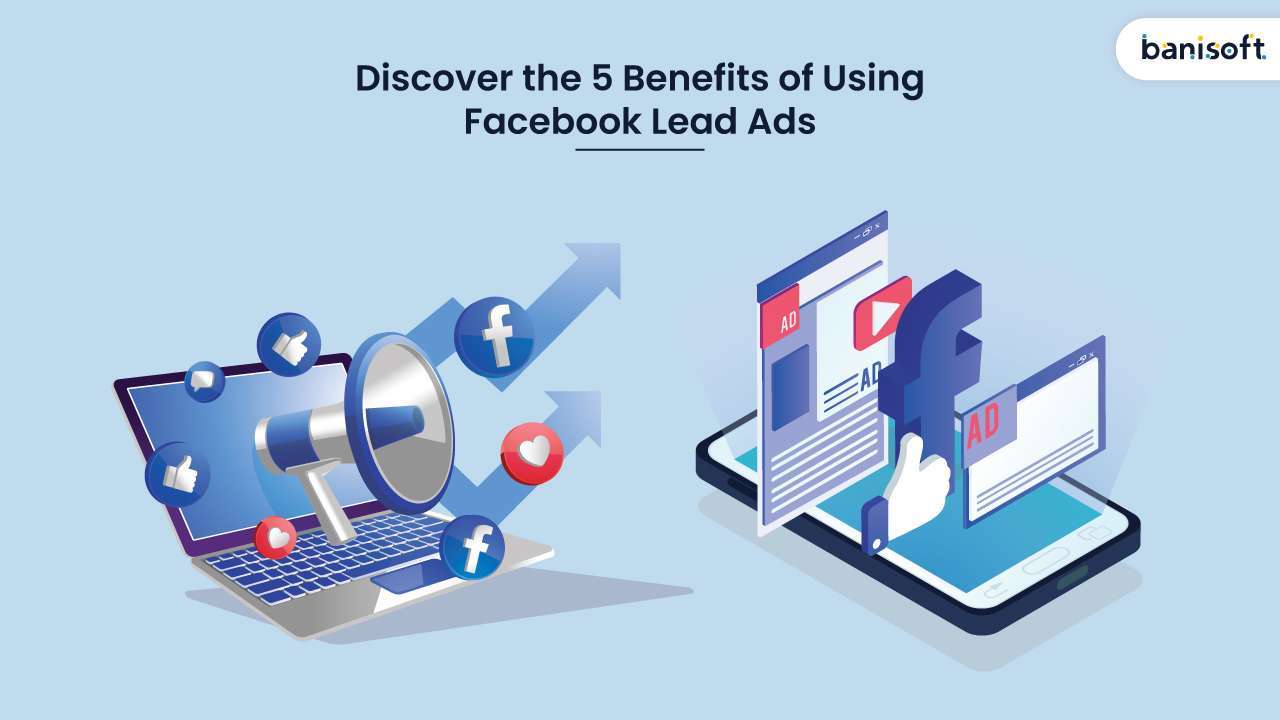Discover the 5 Benefits of Using Facebook Lead Ads

Table of Contents
- Facebook Leads ads
- Why Facebook Lead Ads
- Facebook Lead Ads Example
- Prominent Advantages of Facebook Lead Ads in 2023
- Final Words
Every ingenious entrepreneur understands the powerful impact that a steady flow of incoming leads has on the growth and success of their business.
However, to truly elevate your sales and expand your venture, it’s crucial to transform those leads into loyal paying customers. One powerful approach to ease the process of conversion? Facebook Advertising!
Are you aware that Facebook has over 2.91 billion active users? Considering this, think of the huge number of potential customers you can reach through Facebook Advertising. The possibilities are truly endless!
The primary concern here is figuring out the most effective way to connect with your business’s potential leads on Facebook.
That is where the power of Facebook lead ads comes into play!
Facebook Lead Ads
Facebook lead ads, a certain type of ad, allow you to gather leads straight from the Facebook platform.
As they are admiringly user-friendly and have impressive conversion rates, these ads are expeditiously becoming one of the top methods for generating leads on Facebook.
Before we explore the main benefits of Facebook Lead Ads, it’s important to grasp some elementary background information.
Why Facebook Lead Ads
In a nutshell, they deliver a smooth user experience (UX), making the conversion process easier. Let’s see how:
Facebook ads serve as promoted forms. Unlike traditional processes where potential clients had to leave Facebook and land on your website’s page, Facebook Lead Ads enable users to complete a form right on the platform.
These forms allow you to gather vital details such as the lead’s name, email address, phone number, and more.
Users can complete the form exactly where they encountered your ad, so they’re never redirected elsewhere.
This approach significantly enhances conversions, as it eliminates the unnecessary steps required with a longer click-through path, ultimately leaving a lasting positive impact on your leads.
Moreover, Facebook lead ads empower you to create customized advertisements precisely aimed at specific groups based on factors like age, interests, and more!
Facebook Lead Ads Example
Imagine you’re a real estate agent aiming to develop leads from individuals interested in purchasing or renting a home.
To achieve this, you have to start by creating a Facebook lead ad campaign containing vital details like the campaign name, purpose, and funding.
Afterward, develop the form presented within your lead ad, which should collect appropriate information from potential leads, such as their names, email addresses, and phone numbers.
Next, establish your campaign’s targeting by concentrating on specific criteria like age, gender, location, and interests.
Once your campaign is ready to go, nurture it by creating a Facebook lead ad and including a link to your lead ad form.
When users click on the advertisement, they’ll be directed to the pre-filled form inside the app — making it uncomplicated for them to submit their details.
And there you have it – a fresh lead ready for the follow-up!
Prominent Benefits of Facebook Lead Ads in 2023
Native Functionality
As previously stated, Facebook lead ads vary from traditional methods as they occur entirely within the Facebook app, simplifying the conversion procedure for both advertisers and users.
This inherent feature without redirects is significant for both you and your user.
This native functionality not only offers a superior in-app experience but also increases the likelihood of conversion, as users can stay on the same screen or app.
Mobile Responsiveness
It’s no secret that receptive design plays an essential role in ensuring a positive user experience.
However, certain applications need to be optimized for mobile devices to avoid inconveniences that the users face when they try to visit the website on their phones.
Conversely, Facebook is fully furnished for mobile users, and so are the Facebook lead ads.
This means you can be confident that regardless of the device your users employ – be it mobile, tablet, or desktop – they will enjoy a coherent experience with your ad.
Your form will consistently display appropriately across all platforms.
Easy Data Collection
Facebook lead ads have made the complex process of data collection remarkably straightforward.
In other types of leads, users need to invest time and effort to provide their personal information. This not only consumes the user’s time but also makes it difficult for you as an advertiser.
On the other hand, since users are already on Facebook, their data can be auto-filled into forms.
As a result, Facebook effectively saves both you and the user from dealing with separate web pages, redirects, or intricate forms, making the entire process effortless.
Highly-Targeted Segments
Highly targeted segments refer to reaching a specific group of audiences you want to target.
Facebook lead ads excel in this concern, enabling you to design ads tailored to different categories such as age, gender, interests, and more.
As a result, your advertisement will only appear to users who match your predefined target audience.
This implies that the leads you obtain are genuinely interested in your products or services and have a higher likelihood of conversion.
For Example, If you’re a real estate agent specializing in luxury homes in New York, you’d like to target users residing within a specific radius of New York with higher household earnings.
Effortless Integration with CRMs
Facebook has collaborated with numerous prominent CRM tools, including Hubspot, Freshsales, Bitrix24, Kommo, Copper CRM, and Zoho CRM, among others.
This method eliminates the need for managing your customer data on Facebook since you can efficiently handle them through your own Customer Relationship Management (CRM) system.
Integrating Facebook with your CRM enables you to view all incoming leads in one place.
Also, once your lead ad data has been integrated into your company’s CRM, it allows for real-time access to this data.
This is possible because the connected CRM employs a webhook or Graph API to bring the information right when it occurs on Facebook.
Therefore, when users complete a form or subscribe to an ad, their details will immediately be sent to your CRM tool.
Final Words
Facebook Lead Ads – your go-to solution for top-of-the-funnel lead generation! By offering a seamless user experience, mobile responsiveness, highly targeted segments, and effortless CRM integration, entrepreneurs can efficiently generate leads and convert them into loyal customers.
Don’t miss out on this amazing opportunity for your business by leveraging Facebook lead ads! Speak to our top-notch Banisoft experts now and witness fantastic results!
Discover the 5 Benefits of Using Facebook Lead Ads Read More »


